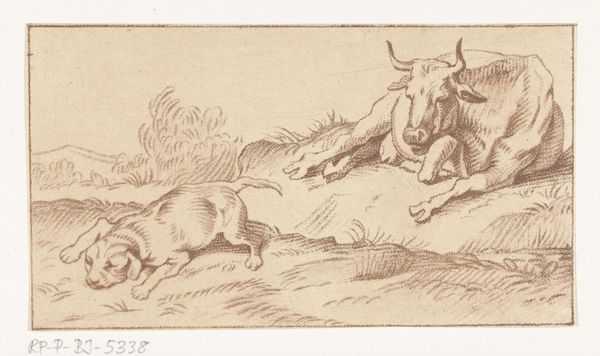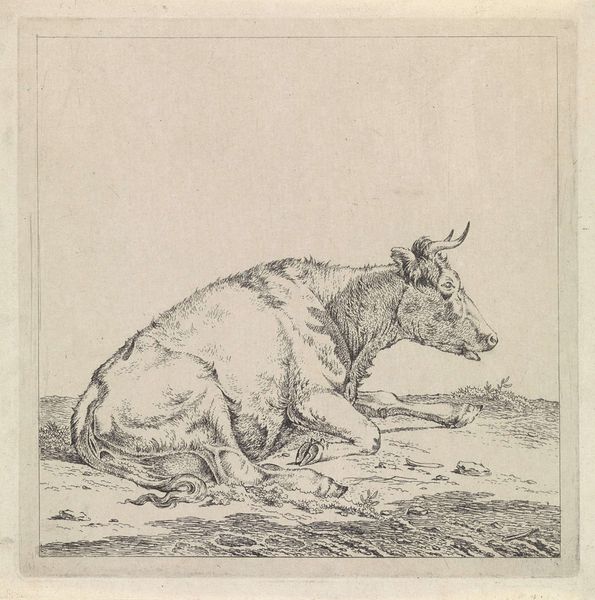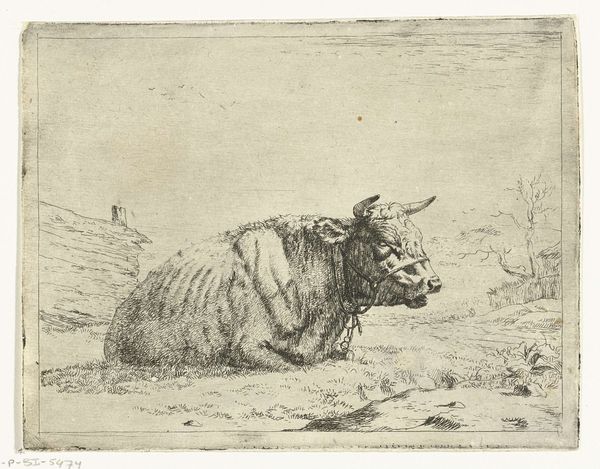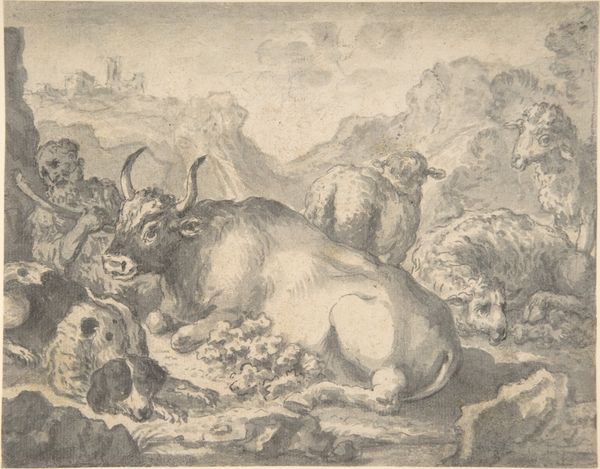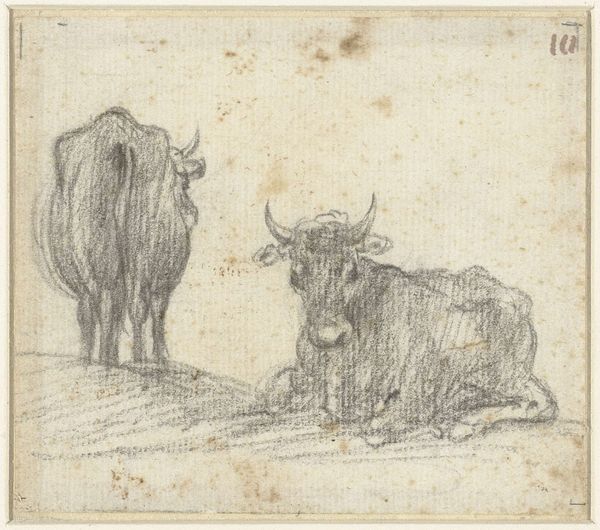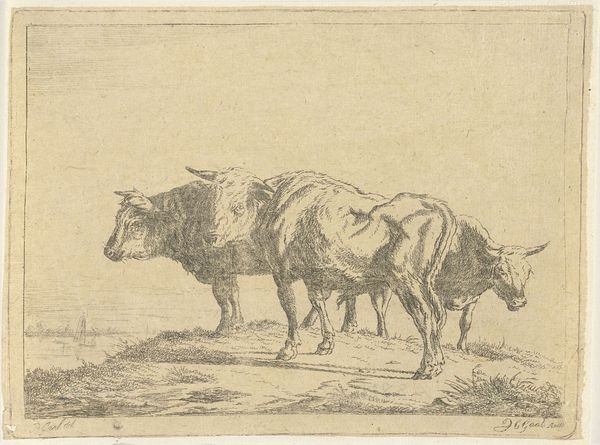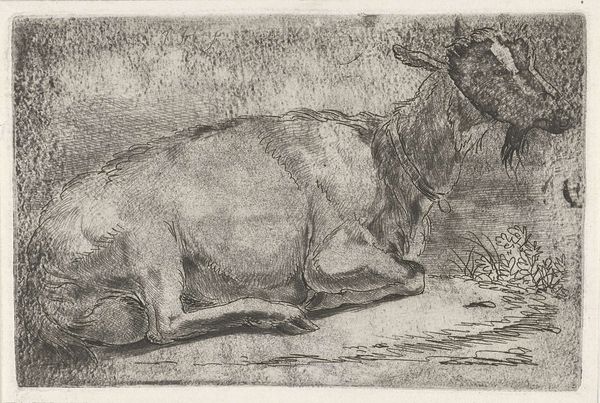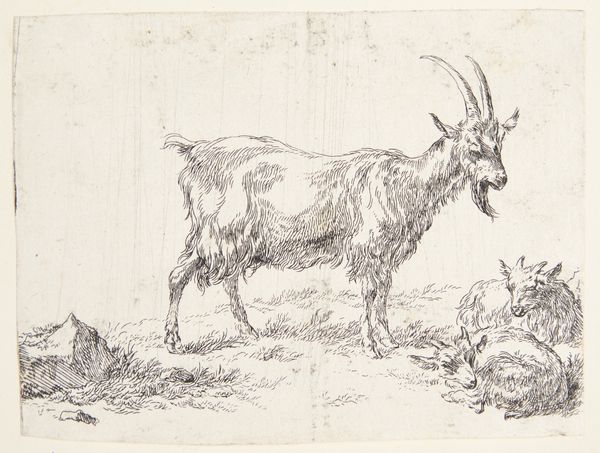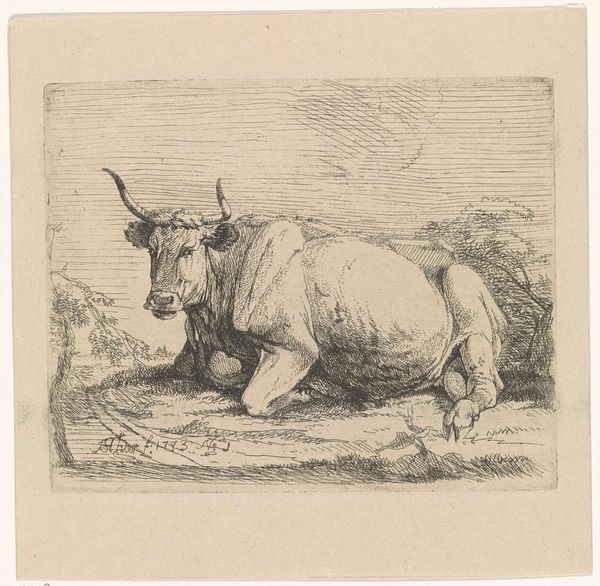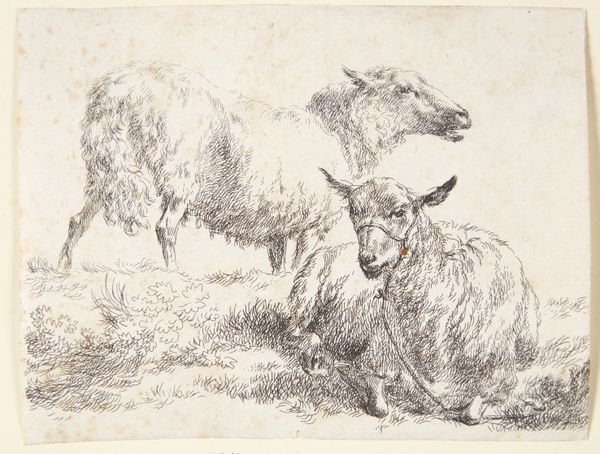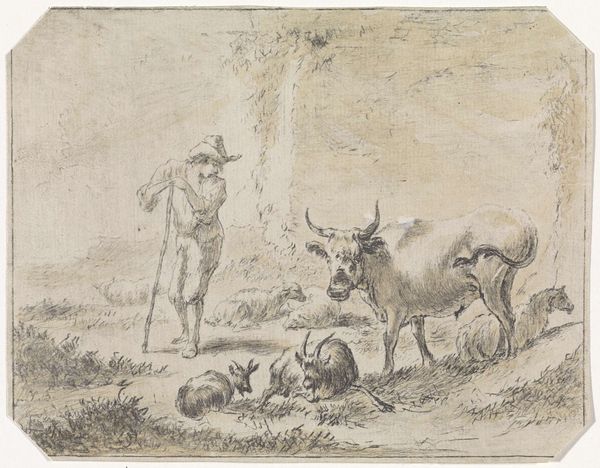
Dimensions: support: 153 x 188 mm
Copyright: CC-BY-NC-ND 4.0 DEED, Photo: Tate
Editor: This is Thomas Gainsborough's "Study of a Cow in a Landscape." I’m struck by how the composition leads my eye across the reclining cow and into the landscape. What do you make of this work? Curator: The efficiency of line is quite remarkable, wouldn’t you agree? Observe how Gainsborough uses hatching and cross-hatching not merely to describe form but to evoke texture. The texture of the foliage is quite distinct from that of the cow. Editor: That’s a great point. It’s like he’s using different languages of mark-making. It is more than just the image of a cow, but an exploration of form? Curator: Precisely. It is not merely mimetic; rather, it's a study in the potential of line itself. We see the essence of bovine form translated through the economy of means. Editor: I never thought of it that way before, but it makes so much sense. Thanks!
Comments
tate 7 months ago
⋮
http://www.tate.org.uk/art/artworks/gainsborough-study-of-a-cow-in-a-landscape-t08111
Join the conversation
Join millions of artists and users on Artera today and experience the ultimate creative platform.
tate 7 months ago
⋮
Gainsborough was an enthusiastic and accomplished draughtsman. More drawings survive by him than for any other British landscape artist in this period. In his early career his preferred drawing medium was pencil, and his favoured subject-matter plants, trees or animals, mossy banks, woodland paths and thickets. Drawing for Gainsborough has been described as an act of love and recreation rather than a means of storing up information - though he did sometimes turn to his early studies for compositional ideas. This drawing has been coated with a layer of fixative which has subsequently discoloured. Gainsborough recommended 'skim'd milk' for fixing chalk, but whether he used the same substance for fixing pencil is not known. Gallery label, September 2004
